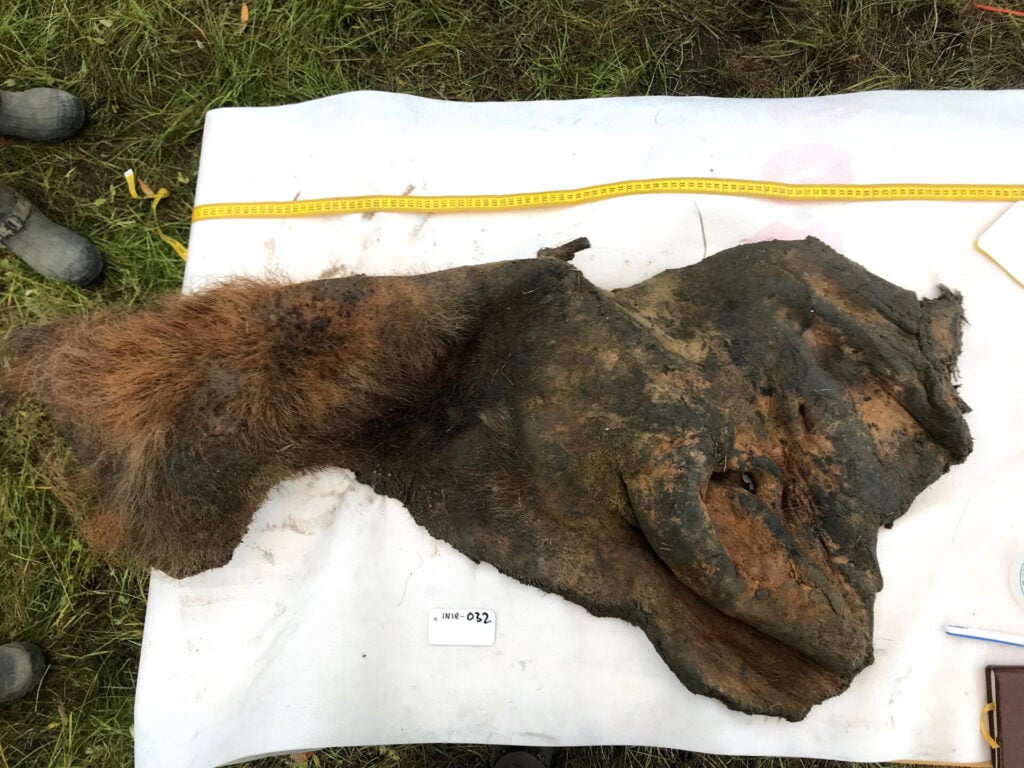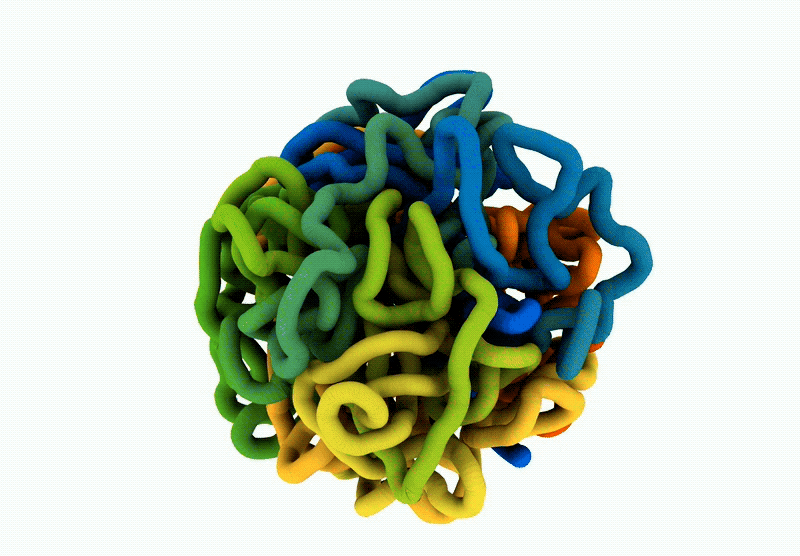A team of top scientists has made a remarkable discovery in the small molecules of a giant creature: the genome architecture perfectly preserved in the remains of a 52,000-year-old woolly mammoth. The desiccated skin is so well preserved that it contains intact mammoth chromosomes, giving researchers an unprecedented glimpse into the biology of this ancient animal.
The last mammoths disappeared 4,000 years ago, a period recent enough that some pyramids were already being built in Egypt. For this study, however, the team examined samples from mammoths dating back 52,000 and 39,000 years, respectively, when anatomically modern humans still shared the planet with Neanderthals.
Mammoth remains have been found in the steppe where they once lived. The remains of these hairy proboscideans are often preserved in permafrost (permanently frozen topsoil), though thawing and refreezing can damage the microscopic structures of the animals’ soft tissues. Sometimes, the preservation is astonishing. In 2022, for example, a perfectly preserved young mammoth was discovered in a Yukon gold mine. But the recent discovery revealed preservation on an entirely different scale: molecular. The team’s research was published today in Cell.
“We looked around, we dug, and when we finally zoomed in, we could see that we were looking at a new type of fossil,” study co-author Erez Aiden Lieberman, a computer scientist and geneticist affiliated with Rice University, Baylor College of Medicine and the Broad Institute of MIT and Harvard, said at a news conference Tuesday.

How did chromosomes survive so long?
The 52,000-year-old mammoth remains studied by the team preserved their millimeter-scale hairs, suggesting that the woolly mammoth was flash-frozen. According to the team, this preservation indicates that it was frozen about 10,000 years before the Neanderthals went extinct, because the intact hairs mean that the skin sample had not been thawed since then. So the animal retained its hairs, follicles, intact cells, and, of course, its chromosomes folded into their regions of the cell. The research team was able to see the genetic loops that managed the expression of a certain gene.
“This sample was freeze-dried, forming a kind of beef jerky,” Leiberman Aiden explained. Beef jerky is meat that has undergone a glass transition, which makes it durable. When freeze-dried, the mammoth skin became a molecular traffic jam at the microscopic level, where chromosomes couldn’t diffuse. The skin samples became time capsules for ancient molecules, and the team dubbed the frozen genetic material “chromoglass.”

Gif: Vinicius Contessoto, Antonio Oliveira Jr., José Onuchic
The quality of the remains made it possible to assemble the first genome of an extinct species, the researchers explained. Mammoths had 28 chromosomes, just like elephants (and unlike humans, who have 23). The team reconstructed the mammoth chromosomes in 3D. To us, it looks like a Gordian knot. But to the researchers, it’s a surprisingly precise look at the microscopic structures that helped map out the giants of the Ice Age steppe.
“The diversity that we can capture with this massive genome opens up new possibilities for comparing species,” said Cynthia Pérez Estrada, a researcher at Baylor College of Medicine and co-author of the study, at the press conference. “Just having this fingerprint of chromatin organization in three-dimensional space is incredible.”
Mammoth ‘beef jerky’ has kept the molecular structure of chromosomes intact
The team did everything they could to try to destroy the molecular structure of the chromoglass. For their tests, they replaced the desiccated mammoth hide with dehydrated beef mortadella from Boar’s Head, which had virtually the same structure at the molecular level. The researchers submerged the chromoglass beef in water, acid, and liquid nitrogen; they microwaved it, hit it with baseballs and a mallet; they ran it over with a car, verbally abused it (“emotionally damaged it,” they joked at the press conference), and pelted it with shotgun shells (see below). Despite the material’s fragmentation, the substance’s chromosomal structure remained intact at the microscopic level.

“These are the first (preserved chromosomes),” Olga Dudchenko, a genomics researcher at Rice University and Baylor College of Medicine and a co-author of the study, said at the news conference. “We think many more will be discovered in the coming years.”
The new findings reveal molecular preservation never before seen in ancient remains. While older DNA has been discovered (a handful of the authors of the new study were part of the team that published research on the oldest DNA preserved at the time, in millions-year-old mammoth tusks), the newly described remains have provided insight into how the mammoth’s genes were expressed and its genome assembled. The current record for the oldest sequenced DNA belongs to a swath of environmental DNA recovered from northern Greenland, from which the research team was able to reconstruct the ancient environment of the early Pleistocene.
What can scientists do with flash-frozen chromosomes?
The perfect preservation of this delicate molecular material could have implications for de-extinction, the process by which some scientific teams and companies are trying to produce surrogate species that, for all intents and purposes, represent recently extinct animals. Specifically, studying how genes that regulate cold resistance and promote hair growth could be useful to companies trying to create 21st-century mammoths. Earlier this year, one such company, Colossal Biosciences, successfully created elephant stem cells, the first to be engineered in the embryonic state. Still, the team emphasized that de-extinction is a difficult process and not the goal of their research.
“We are a very powerful species on a very small planet, making important decisions about the future of our species and life on this planet, in the context of climate change, for example,” Leiberman Aiden said. “It’s about our ability to learn from the past.”“
AI can help break down the tree of life
The Asian elephant is the closest living relative of the woolly mammoth. Scientists can better understand elephant genetics by using mammoth chromosomes. But elephant genetics can also inform scientists’ understanding of the mammoth. Scientists can feed AI models a strand of genetic code and ask the AI where proteins were likely linked in the mammoth, or how the genome is likely folded.
“Even a handful of data points on mammoths, when fed to these AIs, can yield a wealth of information,” Aiden Lieberman told Gizmodo. In addition to the Asian elephant, AI tools can contextualize the mammoth genome on the tree of life. “The great power of AI is its ability to take information from all of these species and synthesize it to give you pretty good estimates,” Aiden Lieberman added.
A combination of new technologies, inventive methods and luck is allowing us to experience the ancient world on scales never before seen. Understanding the enormous mammoth at the molecular level helps us understand the ancient past, but also allows us to envision today’s animals for the future.